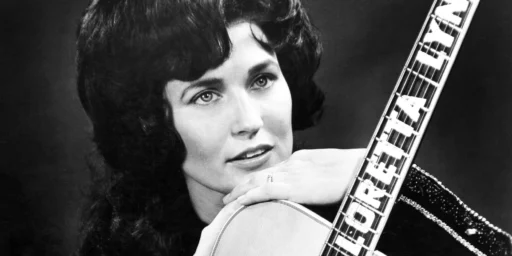Sexy Songs Lead Teens to Have Sex
A new RAND study shows sexy song lyrics encourage teenagers to have sex.
Teens whose iPods are full of music with raunchy, sexual lyrics start having sex sooner than those who prefer other songs, a study found. Whether it’s hip-hop, rap, pop or rock, much of popular music aimed at teens contains sexual overtones. Its influence on their behavior appears to depend on how the sex is portrayed, researchers found. Songs depicting men as “sex-driven studs,” women as sex objects and with explicit references to sex acts are more likely to trigger early sexual behavior than those where sexual references are more veiled and relationships appear more committed, the study found.
Teens who said they listened to lots of music with degrading sexual messages were almost twice as likely to start having intercourse or other sexual activities within the following two years as were teens who listened to little or no sexually degrading music. Among heavy listeners, 51 percent started having sex within two years, versus 29 percent of those who said they listened to little or no sexually degrading music.
Exposure to lots of sexually degrading music “gives them a specific message about sex,” said lead author Steven Martino, a researcher for Rand Corp. in Pittsburgh. Boys learn they should be relentless in pursuit of women and girls learn to view themselves as sex objects, he said.
“We think that really lowers kids’ inhibitions and makes them less thoughtful” about sexual decisions and may influence them to make decisions they regret, he said.
While I don’t doubt the correlation between raunchy lyrics and teen sexuality, it’s also true that correlation is not causation. Indeed, my first thought was that the relationship was almost certainly spurious.
Perhaps kids who are more sexually open are more apt to listen to sexually provocative music, whereas kids who are sexually shy are less inclined?
Perhaps kids with strong religious upbringings are less likely to both have sex and have such songs on their iPods?
Perhaps kids whose parents take an active role in their lives are less likely to both have sex and have such songs on their iPods?
So few of these studies have significant multivariate controls to account for other obvious explanations. This one may well be different:
Martino said the researchers tried to account for other factors that could affect teens’ sexual behavior, including parental permissiveness, and still found explicit lyrics had a strong influence.
However, Yvonne K. Fulbright, a New York-based sex researcher and author, said factors including peer pressure, self-esteem and home environment are probably more influential than the research suggests. “It’s a little dangerous to just pinpoint one thing. You have to look at everything that’s going on in a young person’s life,” she said. “When somebody has a healthy sense of themselves, they don’t take these lyrics too seriously.”
While I agree with Fulbright intuitively, I’d have to see the controls Martino used to make judgment. The study methodology, as represented in the AP write-up, strikes me as legitimate. It apparently also trends with other research in the field.
David Walsh, a psychologist who heads the National Institute on Media and the Family, said the results make sense, and echo research on the influence of videos and other visual media. The brain’s impulse-control center undergoes “major construction” during the teen years at the same time that an interest in sex starts to blossom, he said. Add sexually arousing lyrics and “it’s not that surprising that a kid with a heavier diet of that … would be at greater risk for sexual behavior,” Walsh said.
Very interesting.
I wonder how this release will play out? On one hand, it might encourage parents to monitor their kids’ music listening habits more closely. On the other, it might encourage teens who aren’t gettin’ any to by more rap albums.
UPDATE: Commenter Gollum (of the Unreliable Intelligence blog) helpfully points out that the whole article is available online. D’oh. It never occured to me to check; usually, the press reports come out well before the article hits press, let alone the website. More analysis below the fold.
Here’s the relevant section on the methodology:
All of the covariates were measured as part of the baseline interview. Gender and race/ethnicity (dummy coded as white versus black, Hispanic, or other) were self-reported. Respondent age, calculated from date of birth, and baseline interview date was measured continuously in years.
We included several indicators of social environment known to predict initiation of coitus. Teens who reported living with both of their parents were contrasted with all others. Parent education was measured as schooling completed by the more highly educated parent (1 = less than high school to 6 = completed graduate or professional degree). Parental monitoring was measured with a 5-item scale (eg, “When you are away from home, your parents know where you are and who you are with”; items rated from 1 = strongly agree to 5 = strongly disagree) developed to predict adolescent risk behavior ({alpha} = .70).48 An additional measure tapped parental prescriptive norms by asking perceived parental response if the respondent had sex in the following year (1 = disapprove a lot to 5 = approve a lot). Because responses were bimodal, we recoded the item to dichotomously reflect parents’ disapproval (responses of 1 or 2) versus approval or neutrality (responses of 3, 4, or 5). A single item assessed whether the respondent’s friends were primarily older, younger, or about the respondent’s age and was dichotomized to indicate “older” versus all other responses. We measured perceived friends’ approval of sex by asking respondents, “How would your friends feel if you had sexual intercourse in the next year (1 = disapprove a lot to 5 = approve a lot)?”
We also assessed a number of other personal characteristics that are known correlates of adolescent sexual behavior. Mental health ({alpha} = .68) was assessed with the Mental Health Inventory, a well-validated 5-item scale tapping affective state over the previous 4 weeks.49 Respondents’ self-reported grades in school at baseline were used as an indicator of academic performance (1 = mostly As to 5 = mostly Fs). Deviant behavior was measured with 6 items drawn from previous studies of adolescent risk behavior ({alpha} = .65 in this sample).50 Participants indicated how many times in the past 12 months they had: been sent out of class; broken into a house, school, or place of business; skipped school; cheated on a test; damaged something on purpose; or stolen something (1 = not at all, 4 = ≥10 times). To measure religiosity, we asked participants to indicate on a 4-point scale their agreement with the statement, “Religion is very important in my life.” Sensation seeking, a strong predictor of sexual initiation in a previous study of this sample,41 was measured with 3 items from the Zuckerman scale ({alpha} = .58).51
Finally, we included several indicators of adolescent interest in sex or sexual readiness before music listening to control for the possibility that youth who are considering coital or noncoital activities that they have not yet enacted may listen to more sex-oriented music. These indicators included baseline level of noncoital sexual activity, intentions to have sex in the next year (1 = not at all likely to 5 = extremely likely), expected negative consequences of having sex, and sex self-efficacy. Expected negative consequences ({alpha} = .60) were measured with a 3-item scale (eg, “If you had sex, you would feel guilty afterward”) drawn from a previous study.42 Sex self-efficacy was measured with a single item: “How likely is it that you would be able to talk with a boy (if female respondent) or girl (if male respondent) about whether or not you should have sex?” This item was drawn from a scale used in a previous study in which it was shown to have the highest factor loading.42
While I’m a social scientist by training, this is well outside my field of expertise. From a cursory look, though, this looks reasonable enough. They at least take a legitimate stab at ruling out the most obvious co-variates.






You can access the full text of the article on the Pediatrics website.
The study relies on two unnamed raters who reviewed lyrics they obtained online and then decided whether the lyrics were degrading or not.
The study offers two examples:
I’d agree with the raters on those two points, but I’d also guess that a lot of the references were far more difficult to judge.
Inasmuch as the correlation was found to lie between interval to onset of sex and “degrading” lyrics (versus, say, plain old explicit lyrics), the criteria for what is degrading or not seem to be of critical importance.
Darn that rock-n-roll music anyway. So that was my problem as teenager, I must have had the wrong music in my Pioneer Super-tuner and 6×9 speakers(1979),I wasn’t getting any at all. I thought it was because I was a geeky photography club nerd but now I know the truth. Come on now teen have been having sex since there have been teens, well some of them anyway. I have to admit that some of today’s music is sexually degrading to women so it’s know wonder that more teens are having sex at an earlier age. As a father of two girls and a boy all I can say is listen to your children, no subject is taboo if they want to talk about it.
You can download the entire article at the Pediatrics website.
Tipper Gore must be smiling at her vindication.
Interestingly, the authors point out that by the time their survey was complete, half their sample had become legal adults and, in their words, “initiation of intercourse in this group would not be considered early according to US norms and might be considered healthy.”
I think how you define “parental permissiveness” for purposes of control is pretty subjective.
I strongly suspect that parents have a lot of influence here, but I will also say that if you are fed constantly with songs that refer to sex as nothing more than lust and/or physical gratification, you may be more open to sex when tempted.
Had the Democratic Party not invented horniness in 1967, today’s youth would be chaste indeed.
Why, back in my day we always hoped enough beer would do the trick. On rare occassions, it worked.
Never thought much about the music.